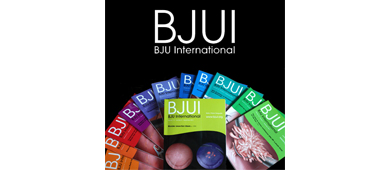Videos: Avoiding breaches of the histological boundaries of the prostate in open radical prostatectomy
Assessing the extirpative quality of a radical prostatectomy technique: categorisation and mapping of technical errors
Christian Barré, Matthieu Thoulouzan*, Geneviève Aillet† and Jean-Michel Nguyen‡
Department of Urology, Jules Verne Clinic, Nantes, *Department of Urology, Rangueil University Hospital, Toulouse, †Institute of Histo-Pathology, and ‡Department of Epidemiology and Biostatistics, UMR 892, University Hospital, Nantes, France
Objective
- To examine the extirpative quality of an open radical prostatectomy (RP) technique by first categorising and mapping all intraprostatic incisions into benign tissue and then determining a cumulative technical error rate given by all intraprostatic incisions into benign and malignant tissue.
Patients and Methods
- We performed a retrospective review of prospectively collected data relating to 1065 men with clinically localised prostate cancer who underwent open retropubic RP (70.6% nerve-sparing surgery [NSS]) by a single surgeon (January 2005 to December 2011).
- We recorded all intraprostatic incisions: (i) iatrogenic positive surgical margins (PSMs), (ii) deep or superficial benign capsular incisions (BCIs), (iii) incisions into benign prostate glands at the prostate apex or bladder neck (benign glandular tissue incisions [BGTIs]), and determined incision location, length and nature (solitary/multiple).
- We evaluated: (i) associations between benign incisions, NSS and PSMs, (ii) significant predictors for PSM risk by multivariate analysis, (iii) postoperative biochemical recurrence (BCR)-free survival (Kaplan–Meier method).
Results
- Intraprostatic incision rates were 2.3% pT2 PSMs, 6.0% BCIs and 5.4% BGTIs. There were slight variations in rate over time and with NSS technique. Benign incisions were located as follows: 46.8% right posterolateral, 37.5% left posterolateral, and 15.7% bilateral for BCIs; 58.6% bladder neck and 41.4% apical for BGTIs.
- The median (range) incision length, for solitary and multiple incisions respectively, was 4 (1–13) and 9 (2–25) mm for BCIs and 1 (1–5) and 2 (2–6) mm for BGTIs.
- BCI rate, but not BGTI rate, was significantly associated with NSS (P = 0.004) and PSM (P = 0.005), and increased PSM risk 3.6-fold.
- A PSM increased BCR risk two-fold (odds ratio 2.078, 95% confidence interval 1.383–3.122).
- BCR-free survival decreased significantly even for short PSMs (<1 mm; P < 0.001).
Conclusions
- Although the pT2 PSM rate was low (2.3%), the cumulative technical error rate (patients with at least one pT2 PSM, BCI or BGTI) was five-fold higher (12.5%).
- Categorising and mapping intraprostatic incisions is a tool surgeons can use in self-audits to identify areas of potential improvement, reduce errors, and improve surgical skills.

